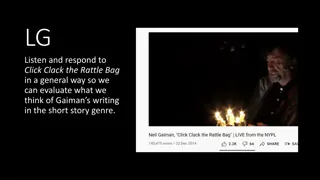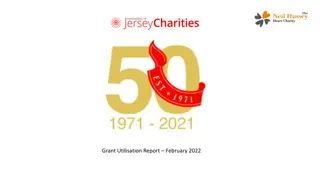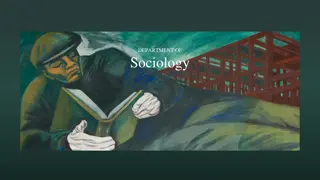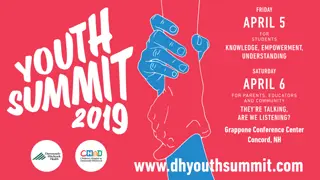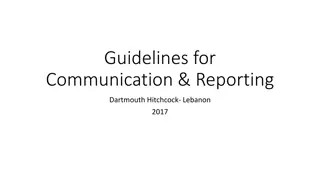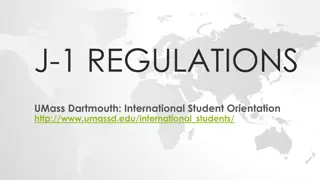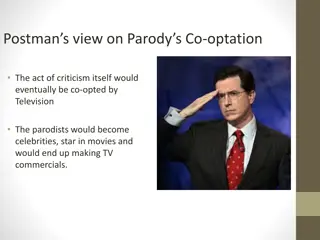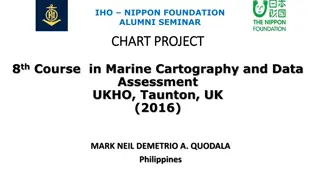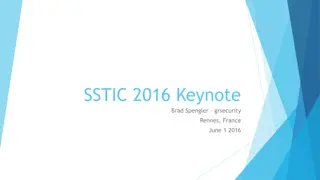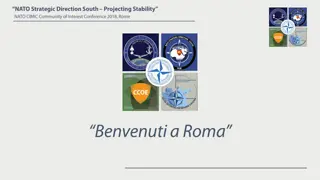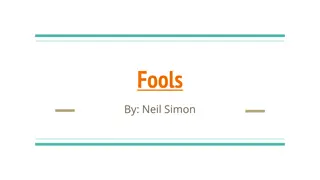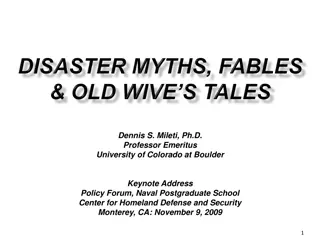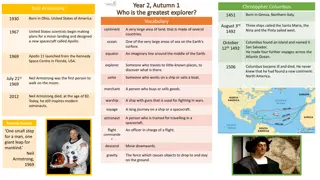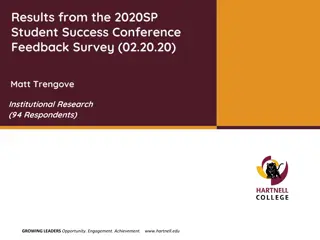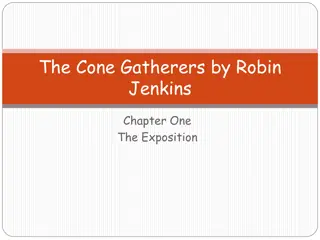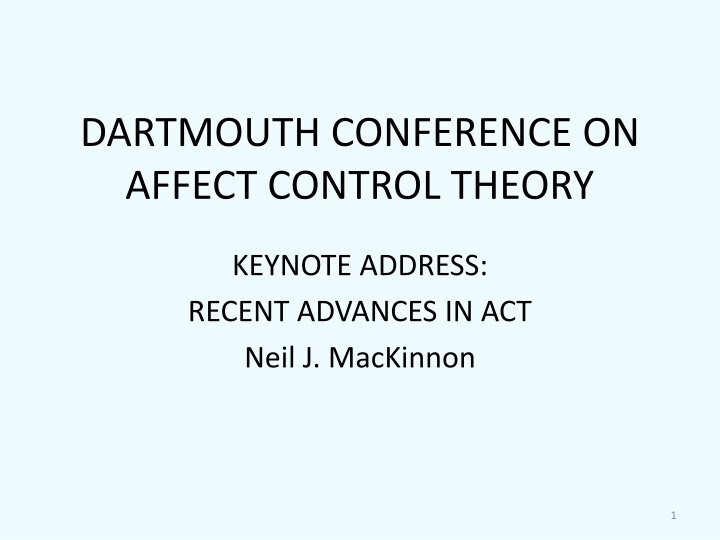
Advances in Affect Control Theory: Key Insights and Applications
Discover the latest advances in affect control theory through theoretical developments, methodological advancements, substantive applications, and insightful studies on cognition, affect, self, and more. Uncover the intricate relations between connotative-affective and denotative-cognitive systems, along with innovative research findings presented at the Dartmouth Conference on Affect Control Theory.
Download Presentation

Please find below an Image/Link to download the presentation.
The content on the website is provided AS IS for your information and personal use only. It may not be sold, licensed, or shared on other websites without obtaining consent from the author. If you encounter any issues during the download, it is possible that the publisher has removed the file from their server.
You are allowed to download the files provided on this website for personal or commercial use, subject to the condition that they are used lawfully. All files are the property of their respective owners.
The content on the website is provided AS IS for your information and personal use only. It may not be sold, licensed, or shared on other websites without obtaining consent from the author.
E N D
Presentation Transcript
DARTMOUTH CONFERENCE ON AFFECT CONTROL THEORY KEYNOTE ADDRESS: RECENT ADVANCES IN ACT Neil J. MacKinnon 1
THEORETICAL DEVELOPMENTS/EXPANSIONS Cognition and Affect Self Social Institutions and Social Order Artificial Intelligence Physical Environment & Technology 2
METHODOLOGICAL ADVANCES BayesACT Impression Formation Equations Miscellaneous Innovations and Tools 3
SUBSTANTIVE APPLICATIONS Cross-Cultural Research Emotions Social Structure, Culture, and Social & Cultural Change Occupations and Work Politics Gender, Ideology, and Subcultures Deviance and Criminology Medical Sociology/Mental Health 4
Cognition and Affect Francis and Adams. (Under review). (A comparison of ACT with Identity Theory.) Hoey and MacKinnon. 2016. (Kent State Conference) (Introduces Somatic Transform Function.) Kelly. 2016/2017. (Group Processes Meetings/Dartmouth Conference) (Deflection, likelihood perception, and institutional sensibility.) Kelly. 2017. (Dartmouth Conference) (Relative predictive power of deflection and institutional sensibility.) Kelly, Robinson, and Smith-Lovin. 2017. (ASA, Montreal) (Expanding work on institutional sensibility.) Moore and Rogalin. 2016. (Advances in Group Processes) (Comparison of ACT and status characteristics theory.) 5
Connotative-Affective Meaning Denotative-Cognitive Meaning c(y) = ( d(x)) = d(x) (x,y) dx Dimensional Parsimony: EPA (Evaluation, Potency, Activity) Dimensional Complexity: Hyper-dimensional d(x) = ( c(y)) = c(y) (x,y) dy Motivation: Directs Behavior Motivation: Energizes Behavior Figure 1: a Schematic Representation of the Relation between the Connotative-Affective and Denotative-Cognitive Systems. 6
Self Hoey and Schroder. 2015. (AAAI Conference Proceedings). (Introduces a Bayesian version of ACT-Self as a theoretical foundation for socio-affectively skilled artificial agents.) MacKinnon. 2015. (Self-Esteem and Beyond book). (Focuses on the measurement of self-esteem, self-efficacy and self- activation, the three dimensions of self-sentiment proposed by ACT-Self.) Boyle. (Forthcoming). (Sociological Forum) (Test of ACT-Self proposition that we confirm self-sentiment via identity- selection.) Harkness, Kroska, and Pescosolido. 2016. (Advances in Medical Sociology). (Applying ACT and ACT-Self to study effects of self-stigmatization of psychiatric patients.) 7
Self (cont.) The following three papers deal with the loss of identities and the persistence of a sense of self in people with Alzheimer s disease. Francis, Adams, Konig, and Hoey. 2016. (Kent State Conference) Francis, Lively, Konig, and Hoey. 2017. (ASA, Montreal). Francis, Adams, Konig, and Hoey. 2018. (Chapter for proposed book, Oxford University Press.) The following four papers propose that submission creates specific affective patterns in self-concepts by normalizing power relations Schneider. (Two papers under review); 2016 (ASA, Seattle); Schneider, Gardner, Hinojosa, and Marin. 2014. (Leadership). 8
Social Institutions and Social Order Heise. 2016. (Unpublished). (Studying social institutions via analysis of language.) Heise, MacKinnon, and Scholl. 2014. (Chapter in Lawler and Thye) (Locates social order in cultural meanings of social institutions and interdependence relations.) Kelly 2016/2017; 2017; Kelly, Robinson, and Smith-Lovin 2017. (Papers on institutional sensibility, listed above under Cognition and Affect.) Cannon, Kelly, and Robinson. 2017. (Dartmouth Conference) (A cross-cultural study of deflection by social institutions in the U.S. and Egypt.) 9
Artificial Intelligence Hoey, Schroder, and Alhothali. 2016. (Artificial Intelligence) (Introduces BayesACT to an artificial intelligence and computer science audience.) Francis, Adams, Konig, and Hoey 2016; Francis, Lively, Konig, and Hoey 2017; Francis, Adams, Konig, and Hoey 2018. (Papers dealing with the loss of identities and the persistence of a sense of self in Alzheimer s patients, listed above under section on Self.) The following five papers deal with affectively-aligned assistive technologies for persons with Alzheimer s disease or dementia: Joshi, Konig, Shang, Robillard, Francis, and Hoey. 2017. (Preconference on Affective Computing for Affective Science) 10
Artificial Intelligence (cont.) Konig, Francis, Malhotra, and Hoey. 2016. (Proceedings of International Conference on Pervasive Computing) Konig, Francis, Joshi, Robillard, and Hoey. 2017. (Journal of Rehabilitation and Assistive Technologies Engineering) Lin, Czarnuch, Malhotra, Yu, Schroder, and Hoey. 2014. (Proceedings of International Work on Ambient Assisted Living) Malhotra, Hoey, Konig, and van Vuuren. 2016. (Proceedings of International Conference on Pervasive Computing Technologies for Healthcare) 11
Physical Environment & Technology Lulham, Thurgood, and Shank. 2015. (Proceedings of a design research association) (Counters the cognitive domination of the design process by advancing affective concepts and a novel creativity tool for exploring affect in design innovation.) Shank and Lulham. 2016. (Sociology Compass) (Applying ACT as a framework for studying the role of consumer products in social experience and interaction.) Shank and Lulham. 2017. (Sociological Perspectives) (Applies ACT to study the affective meaning of consumer products and their role in modifying identities and managing impressions.) 12
METHODOLOGICAL ADVANCES BayesACT Hoey. 2017. [BayesACT-Version 2, a major advance over the original version of BayesACT, employing the somatic transform proposed by Hoey and MacKinnon (2016) for all connections between denotative-cognitive and connotative-affective meanings.] Hoey and MacKinnon. 2016. (Kent State Identity Theory Conference) (Introduces the somatic transform function, also listed under Cognition and Affect.) Hoey and Schroeder. 2015. (Proceedings of the AAAI Conference on Artificial Intelligence) (Introduces the Bayesian version of ACT-Self.) 13
BayesACT(cont.) Hoey, Schroder, and Alhothali. 2016. (Artificial Intelligence) (Introduces BayesACT to an artificial intelligence and computer science audience, also listed under Artificial Intelligence.) Schroder, Hoey, and Rogers. 2016. (American Sociological Review) (Introduces BayesACT to a sociological audience.) Asghar and Hoey. 2015. (Proceedings, Uncertainty in Artificial Intelligence Conference) (Focus on the planning aspects of BayesACT.) Jung and Hoey. 2016. (Proceedings of the Canadian Conference on Artificial Intelligence) (Applies ACT and BayesACT to human behavior in the prisoner s dilemma.) Jung and Hoey. 2017. (On line publication: http://arxiv.org/abs/1701.09112 ) (Applies ACT and BayesACT to the networked Prisoner s Dilemma.) 14
Impression Formation Equations Morgan, Rogers, and Hu. 2017. (Social Psychology Quarterly) (Evaluation of four methods of estimating impression- formation equations.) MacKinnon. 2016. (Unpublished) [Analysis of the Canadian Equations employing the categories of effects defined by Morgan, Rogers, and Hu (2017) for derived, assumed, and centered EPA data.] Smith-Lovin and Robinson. 2015. (Final Report to Office of Naval Research) (Comparing cultural sentiments and impression-formation equations across US and Arabic Culture.] 15
Miscellaneous Innovations and Tools Francis and Lively. 2017. (Dartmouth Conference) (Using the EPA dimensions of ACT as a coding and analysis schema for qualitative analysis.) Lulham, Thurgood, and Shank. 2015. (Design innovation tool listed under Physical Environment and Technology.) Morgan, Rogers, and Hu. 2016. (Social Psychology Quarterly) (Propose a new methodology for model specification in affect control theory, listed also under Impression-Formation Equations.) Schr der, Kajic, Stewart, and Thagard. 2017. (Under review) (POEM, a neurocomputational model of emotions based on semantic pointers, listed also under Emotions.) 16
Miscellaneous Innovations and Tools (cont.) Shuster and Campos-Castillo. 2017. (Social Psychology Quarterly) (A methodological innovation based on ACT for quantitative analysis of qualitative data, also listed under Gender, Ideology and Social Movements.) The following three papers involve visual analysis and exhibitions. Schneider, Andreas 2014. (Exhibition, Kinsey Institute). Schneider and Turner. 2016. (ASA, Seattle) (A visual analysis of esthetic experiences of submission.) Schneider. 2017. (Presenter in Documentary, National Geographic Channel). 17
SUBSTANTIVE APPLICATIONS Cross-Cultural Research Cannon, Kelly, and Robinson. 2017. (Dartmouth Conference) (A cross-cultural study of deflection by social institutions in the U.S. and Egypt, listed also under Social Institutions.) Hitlin and Harkness. (Book ms under review, Oxford University Press) (A cross-cultural comparison of the relation between social inequality and moral emotions, described below under Emotions.) Smith-Lovin and Robinson. 2015. (Final report) (New impression-formation equations and dictionaries of cultural sentiments for US English and Arabic-speaking cultures, described above under Impression-Formation Equations.) 18
Emotions Francis. 2015. (ISRE, Geneva) (Study of grief adaptation as a resolution of deflection.) Harkness, Kroska, and Pescosolido. 2016. (Advances in Medical Sociology) (Applied ACT and ACT-Self to study emotional and other effects of self-stigmatization by psychiatric patients, listed also under Medical Sociology/Mental Health.) Hitlin and Harkness. (Under review, Oxford University Press) (A cross-cultural comparison of the relation between social inequality and moral emotions.) Rogers, Schr der, and von Scheve. 2014a. (Emotion Review) (Proposes a multi-level theory of emotion construction based on ACT.) 19
Emotions (cont.) Rogers, Schr der, and von Scheve. 2014b. (Emotion Review) (A reply to invited comments on the 2014a article.) Schneider, Gardner, Hinojosa, and Marin. 2014. (Leadership) (Deals with emotional responses of leaders to subordinates, listed also under Work and Occupations.) Schneider. 2015. (ISRE, Geneva). (Analysis of submission as esthetic experience.) Schr der, Kajic, Stewart, and Thagard. 2017. (Under review). [Introduces POEM, a neurocomputational model of emotions based on semantic pointers, integrating neural, cognitive, and social levels of explanation.] Zhao and Rogalin. (Under review, based on 2016 ASA paper). (Effect of emotion displays on sentencing by gender of perpetrator.) 20
Social Structure, Culture, and Social & Cultural Change Ambrasat. (In progress, from PhD dissertation). (Integration of affective meanings within the sociology of culture and cognition.) Ambrasat, von Scheve, Schauenburg, Conrad, and Schr der. 2014. (Proceedings of the National Academy of Sciences) (Within society consensus and variation in the affective meaning of concepts pertaining to two elementary forms of human sociality, authority and community.) Ambrasat, von Scheve, Schauenburg, Conrad, and Schr der. 2016. (Sociological Forum) (Large empirical study of habitus at individual level of meaning and lifestyle.) Schauenburg, Ambrasat, Schr der, von Scheve, and Conrad. 2015. (Behavior Research Methods) (Affective meanings of words from the semantic fields of authority and community, core dimensions of human sociality.) 21
Occupations and Work Kroska and Cason. 2017. (Unpublished, based on 2016 ASA, Seattle paper). (Interactional dynamics in the workplace and the gender gap in business leadership.) Schneider, Gardner, Hinojosa, and Marin. 2014. (Leadership) (Normalization of power relations through submission and effect on self-concept, listed also under Self heading.) 22
Politics Ambrasat. (In press). (Affective meanings of political parties and political identification in Germany.) 23
Gender, Ideology, and Subcultures Moore, Rogalin, and Cannon. 2017. (ISRE, Geneva) (Relates threatened masculinity identities to violence and mass killings, listed also under Deviance and Criminology) Shuster and Campos-Castillo . 2017. (Social Psychology Quarterly) (How framing social issues in terms of cultural ideology contributes to the success or failure of a social movement.) Kroska and Cason. 2017. (Unpublished, based on 2016 ASA Seattle paper) (Interactional dynamics in the workplace and the gender gap in business leadership, listed also under Occupations and Work.) 24
Deviance and Criminology The following six papers apply ACT, ACT-Self, and identity theory to the psychological distress resulting from sexual assault. Boyle. 2015. (Unpublished) Boyle. 2016. (Unpublished, from PhD dissertation) Boyle. (Forthcoming). (Society and Mental Health) Boyle. (Forthcoming). (Sociological Forum) (Test of ACT-Self, listed also under section on Self.) Boyle and McKinzie. 2015. (Social Psychology Quarterly) Boyle and Walker. 2016. (Deviant Behavior) 25
Deviance and Criminology (cont.) The following two papers apply concepts and measures from ACT and ACT-Self to the labeling of juvenile delinquents. Kroska, Lee, and Carr. 2017a. (Social Science Quarterly) Kroska, Lee, and Carr. 2017b (In press, Advances in Group Processes) Kroska and Schmidt. 2017. (Unpublished, based on 2015 ASA paper) (Effect of occupational status and criminal behavior on criminal sentencing.) Moore, Rogalin, and Cannon. 2017. (ISRE paper) (Relates threatened masculinity identities to violence and mass killings, listed also under Gender, Ideology, and Subcultures.) 26
Deviance and Criminology (cont.) Zhao and Rogalin. 2016. (Under review, based on 2016 ASA paper) (Effect of emotion display on sentencing by gender of perpetrator, listed also under section on Emotions.) 27
Medical Sociology/Mental Health Harkness, Kroska, and Pescosolido. 2016. (Advances in Medical Sociology) (ACT and ACT-Self applied to the effects of self-stigmatization of psychiatric patients on identities, emotions, and life course, listed also under section on Emotions.) Boyle (Forthcoming). (Society and Mental Health) (A study of how reidentification moderates the effect of sexual assault on post-traumatic stress, listed also under Deviance and Criminology.) 28
Medical Sociology/Mental Health (cont.) The following three papers deal with the loss of identities and the persistence of self in people with Alzheimer s disease, all listed above under section on Self.) Francis, Adams, Konig, and Hoey. 2016. (Kent State Conference). Francis, Adams, Konig, and Hoey. 2018. (Chapter, proposed book, Oxford University Press). Francis, Lively, Konig, and Hoey. 2017. (ASA, Montreal). 29


